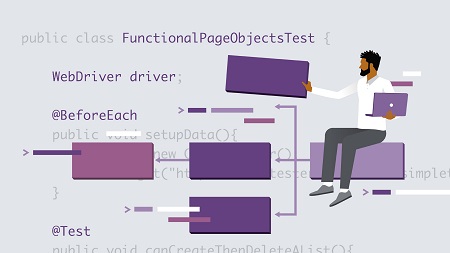
English | MP4 | AVC 1280×720 | AAC 48KHz 2ch | 2h 51m | 525 MB
The Page Object Model is a popular design pattern for automating web applications. Test automators can be more effective if they have mastered multiples ways of creating page objects and understand their pros and cons. In this course, Alan Richardson shows how to model GUI applications as page objects in Selenium. Discover how to refactor code into abstractions and abstract the details of your infrastructure, dependencies, and even technology elements like buttons and input fields. Explore the different types of page objects, and discover how to abstract navigation and test data. Plus, find out how to model the execution of an application with domain-specific languages. Alan closes with tips on making abstraction design decisions.
Topics include:
- Refactoring to abstractions
- Support abstractions
- Infrastructure abstractions
- Technology abstractions
- Types of page objects
- Navigation abstractions
- Domain abstractions
- Using domain-specific languages (DSLs)
- Making abstraction design decisions
Table of Contents
1 Model your application for automation
2 What you should know
3 What are abstractions
4 How do abstractions help
5 Refactoring to abstractions
6 What are support abstractions
7 Infrastructure abstractions
8 Dependency abstractions
9 Driver abstractions
10 Technology abstractions
11 Storage abstractions refactored
12 Element abstractions
13 What are page objects
14 POJO page objects
15 Component abstractions
16 Structural page objects
17 Locator page objects
18 Functional page objects
19 Navigation abstractions
20 Data abstractions
21 Domain abstractions
22 Domain-specific languages
23 Code-based DSLs with fluent interfaces
24 Trade-offs and decisions
25 Dos and don’ts
26 Next steps
Resolve the captcha to access the links!